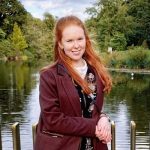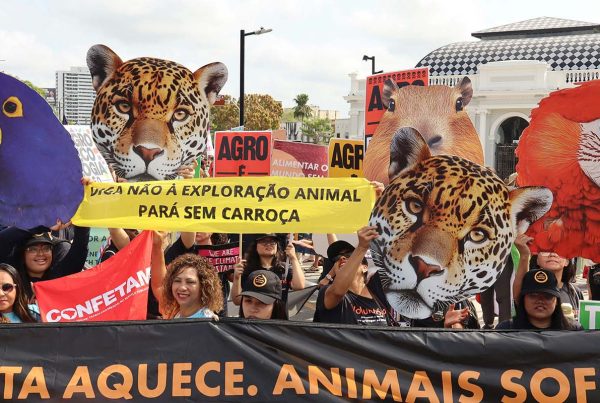What if the key to saving biodiversity lies not in protecting nature from people, but in working with them? For too long, conservation has been shaped by the idea that people are the problem. But evidence, experience, and Indigenous wisdom tell a different story.
The urgency to protect biodiversity and address climate change is undeniable, yet conventional approaches have often overlooked one of the most powerful forces for sustainable change: people.
Across the world, especially in biodiversity-rich regions of the Global South, Indigenous Peoples and Local Communities have long managed their environments sustainably. Their knowledge, customs, and governance systems have protected ecosystems for generations. When these communities are respected and included, conservation outcomes are not only more ethical, but they are also more effective and enduring.
The Limits of Mainstream Conservation
For decades, conservation models have sought to protect nature by restricting human access through protected areas or national parks, often without the consent or involvement of communities. While these strategies have protected habitat, they have also led to dispossession, conflict and lost livelihoods. This top-down approach casts people as threats to nature, rather than its stewards. It creates friction, erodes trust, and reduces the effectiveness of conservation efforts. A growing body of evidence shows that conservation initiatives succeed, and their impact is more sustainable when local communities lead from the centre of these efforts.
What is Human-Centred Conservation?
Human-Centred Conservation is a response to the limitations of exclusionary, top-down conservation models that marginalise local communities and overlook their knowledge and rights. Too often, conservation has focused on protecting nature from people, rather than working with them, leading to dispossession, mistrust, and ineffective outcomes.
Human-Centred Conservation offers a different path. It is a holistic and inclusive approach to conservation that places the leadership, rights and knowledge of Indigenous Peoples and Local Communities at the heart of decision-making. It recognises that those who live closest to nature often hold the deepest understanding of their environments, rooted in generations of lived experience and traditional knowledge.
While it draws on decades of Community-Based Natural Resource Management (CBNRM), Human-Centred Conservation goes further. It places local people not only as implementers but as leaders and architects of conservation strategies. It takes a rights-based approach to integrating biodiversity conservation with social equity, cultural heritage, and economic opportunity.
Crucially, it also recognises the interdependence of environmental, economic, and social wellbeing, addressing health, food security, climate adaptation, and biodiversity economies as interconnected pillars of lasting conservation impact.
Putting Human-Centred Conservation into Practice
At Jamma Conservation & Communities, we are committed to advancing Human-Centred Conservation. We do this by supporting networks and organisations led by or working closely with Indigenous Peoples and Local Communities in Southern Africa. For example, we work alongside the Community Leaders Network (CLN) and Resource Africa, who advocate for rural communities’ rights to manage and benefit from their natural resources. Through these collaborations, we strengthen local governance structures, amplify community voices in policy arenas, and co-develop tools and platforms that support people and nature.
Why Human-Centred Conservation Works
When communities lead conservation, the results speak for themselves:
- Biodiversity thrives, guided by generations of place-based ecological knowledge
- Economies and livelihoods improve through sustainable use of resources, community-based tourism, and inclusive land-use management.
- Trust is built, fostering collaboration and long-term stewardship
- Equity deepens, as communities gain greater agency over their resources, their cultures, and their futures.
- When communities are treated as partners and custodians of their environments, instead of barriers to conservation, people and nature benefit.
A Call to Reimagine Conservation
As environmental and social challenges become more interconnected and complex, the future of conservation will depend on our ability to listen, adapt and share power. Human-Centred Conservation offers a path forward, one that honours Indigenous Peoples and Local Community leadership, supports local priorities and delivers a more sustainable and biodiverse future.
Human-Centred Conservation isn’t a one-size-fits-all model; it’s a mindset grounded in local leadership, flexible in context, and guided by community priorities. We invite other organisations, donors, and governments to explore what it means to put people at the centre of conservation, and to stand alongside those already doing so.
Because conservation doesn’t begin in a boardroom. It begins in communities.

Alison Chusney
Alison is a British conservationist who is passionate about wildlife conservation, both on a global and national scale, with particular interest in endangered species and those that are victims of illegal wildlife trafficking and poaching. Alison has carried out a variety of voluntary work both within the UK and Africa. In the UK she volunteered with the RSPB which has given her experience in species surveys, habitat management and field work. Through voluntary work in South Africa, she was able to gain experience in tracking and mapping of species, humane dehorning of rhinos, antipoaching methods, and the reintroduction of pangolins to a reserve.
Alison holds a Master of Science degree (MSc) in Global Wildlife Health and Conservation from the University of Bristol. Here she carried out a research project assessing factors impacting the population decline of northern and southern white rhinos, through the coverage and representation in British and African newspapers. She also has a Bachelor of Science degree in Bioveterinary Science and Veterinary Nursing from the University of Bristol and has gained a certificate in tracking wildlife in the African bush.



